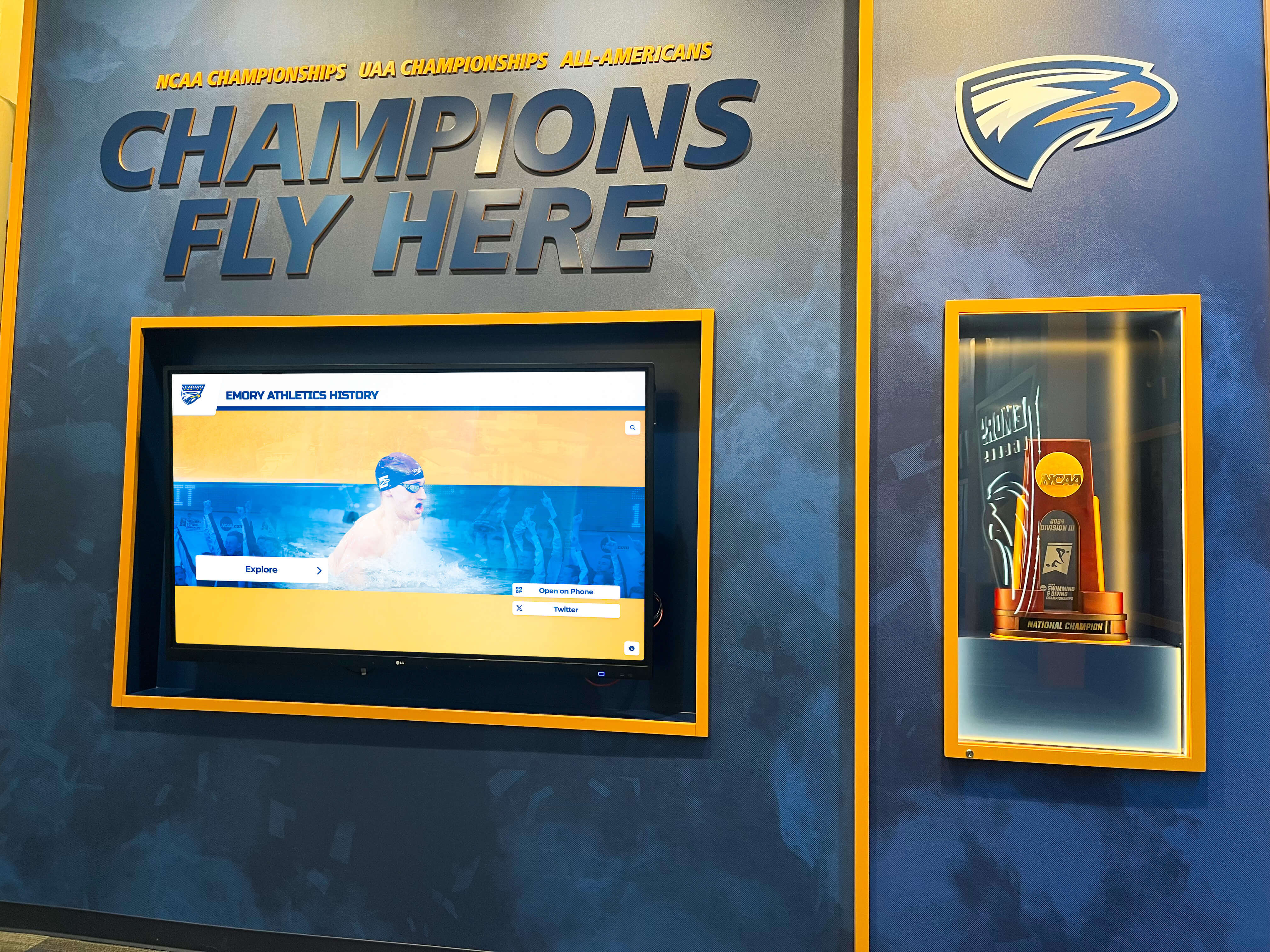Key Takeaways
Discover how to create an impactful state championship journey map that celebrates playoff victories, inspires athletes, and preserves championship legacies through modern digital recognition displays.
Understanding the State Championship Journey Map Concept
Before implementing recognition systems celebrating championship paths, institutions must understand what makes journey mapping effective and how these displays contribute to athletic culture beyond simple acknowledgment of final scores.
Defining Championship Journey Mapping
A state championship journey map documents the complete playoff path from opening rounds through championship victory, creating comprehensive narratives that honor every step toward ultimate success. Unlike traditional championship banners showing only years and titles, journey maps capture the progression including bracket positioning and seeding, round-by-round opponents and scores, location and date of each playoff contest, key performances and game-changing moments, statistical highlights from throughout the run, and emotional narratives connecting individual games to broader stories.
This comprehensive approach transforms championship recognition from static acknowledgment into dynamic storytelling that helps current athletes understand the dedication, persistence, and excellence required to achieve championship success while preserving institutional memory of these defining athletic moments.

The Psychology Behind Journey Recognition
Research in sports psychology reveals multiple mechanisms through which journey mapping influences athlete motivation, team culture, and institutional pride that extend far beyond simple championship acknowledgment.
Process Over Outcome Focus: Journey maps emphasize the path rather than just the destination, helping athletes understand that championships result from consistent excellence across multiple performances rather than single games. When schools display complete playoff runs showing close victories, comeback wins, and gradual momentum building, athletes internalize that sustained effort and resilience matter as much as talent.
Concrete Goal Visualization: Visible championship paths create specific mental models athletes can visualize themselves pursuing. When current players see detailed documentation of previous teams’ playoff journeys, they develop clearer understanding of what championship pursuit actually entails—the opponents they might face, the venues where games occur, and the performances required at each stage.
Cultural Memory and Tradition: Journey maps preserve institutional knowledge preventing championship achievements from becoming abstract history. Without detailed documentation, specific games, performances, and moments fade from collective memory within just a few years. Comprehensive journey mapping ensures these defining moments remain part of active team culture rather than forgotten footnotes.
Team Identity Formation: Documented championship journeys contribute to team identity by establishing standards, traditions, and shared narratives. Athletes join programs with championship heritage feel connected to something larger than themselves, understanding they’re contributing to ongoing stories rather than isolated seasons.
Essential Components of Effective Championship Journey Maps
Exceptional journey maps share common features ensuring they serve athletic and educational objectives effectively while maintaining accuracy, engagement, and motivational power across years of display.
Comprehensive Game Documentation
The most effective journey maps capture complete playoff progressions rather than highlighting only championship games while minimizing earlier rounds.
Round-by-Round Progression:
- Opening round matchups establishing tournament entry
- Quarterfinal contests showing momentum development
- Semifinal victories positioning for championship opportunities
- Championship game results completing the journey narrative
- Tiebreaker or overtime victories highlighting dramatic moments
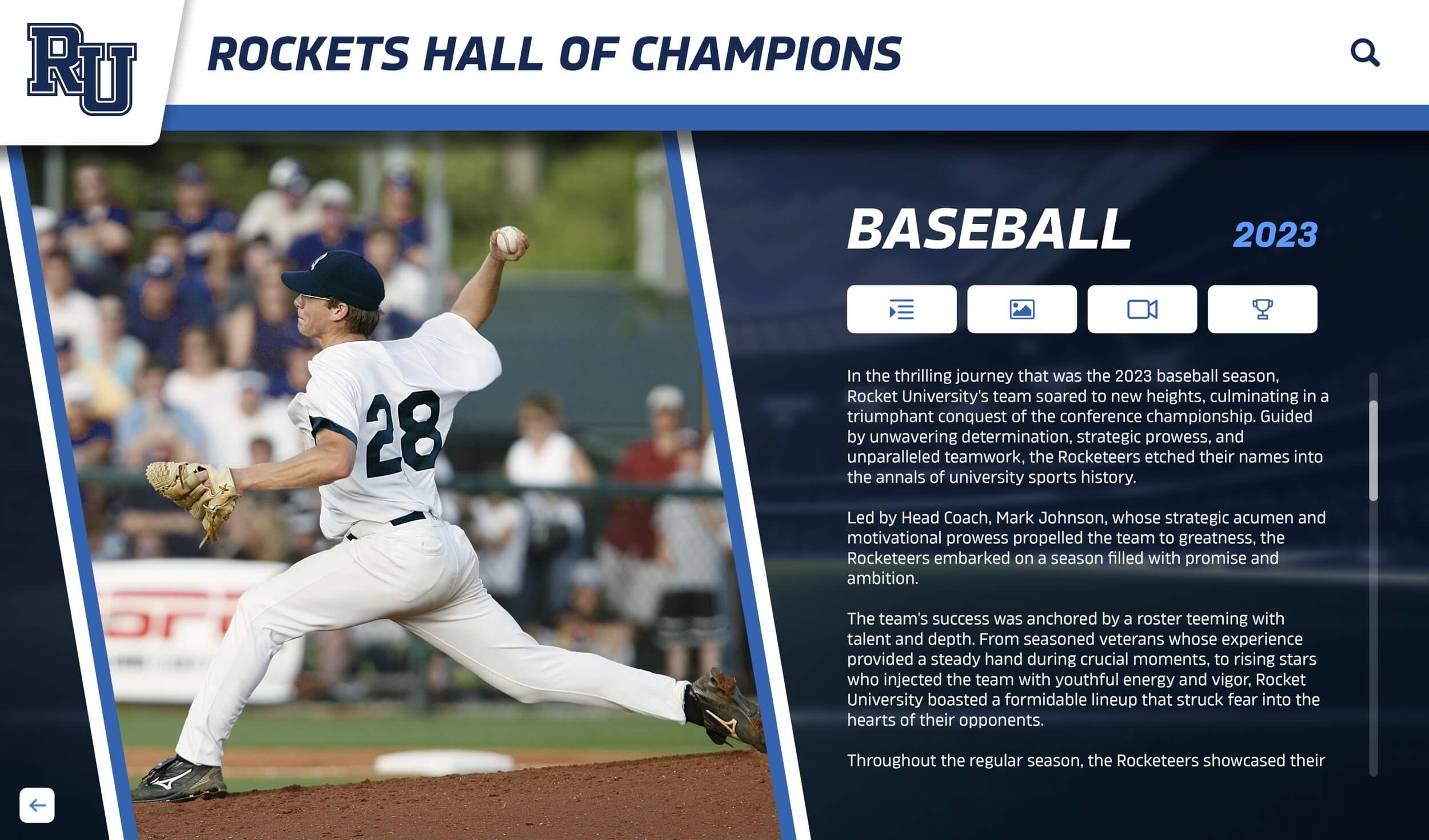
Detailed Game Information:
- Final scores documenting victory margins
- Opponent names and their regular season records
- Game dates and venues providing context
- Weather conditions or venue atmosphere for memorable contests
- Attendance figures for significant games
Key Performance Highlights:
- Individual statistical leaders from each game
- Record-breaking performances during playoff runs
- Defensive stands or special teams plays changing outcomes
- Comeback victories or adversity overcome
- Milestone achievements reached during championship pursuits
Understanding comprehensive sports achievement recognition helps institutions design journey maps celebrating excellence across complete championship paths.
Visual Storytelling Elements
Journey maps transcend simple text documentation by incorporating visual elements that create emotional connections and enhance engagement.
Photographic Documentation:
- Action photography from crucial game moments
- Team celebration images after significant victories
- Pre-game preparation and locker room scenes
- Trophy presentations and award ceremonies
- Fan support and community celebration photos
- Candid moments capturing team chemistry and culture

Video Integration: Modern digital journey maps incorporate multimedia elements impossible with static displays. Game highlight reels showing key plays and scoring sequences, post-game interviews with coaches and athletes, championship celebration footage, season retrospectives narrated by participants, and crowd reactions and community support demonstrations create immersive experiences connecting viewers emotionally to championship journeys.
Bracket Visualization: Clear bracket graphics showing complete tournament structure help viewers understand championship paths within broader competitive contexts. Visual brackets displaying advancement through rounds, highlighting victories while showing what other teams accomplished, and indicating seeding and home/away designations provide comprehensive tournament overviews that static text lists cannot match.
Solutions like Rocket Alumni Solutions provide purpose-built platforms specifically designed for athletic recognition, offering intuitive content management while creating engaging interactive experiences that capture attention more effectively than traditional static displays.
Many institutions discover that digital recognition displays offer the flexibility to showcase complete championship journeys while maintaining professional presentation quality and easy updates that traditional physical displays cannot match.
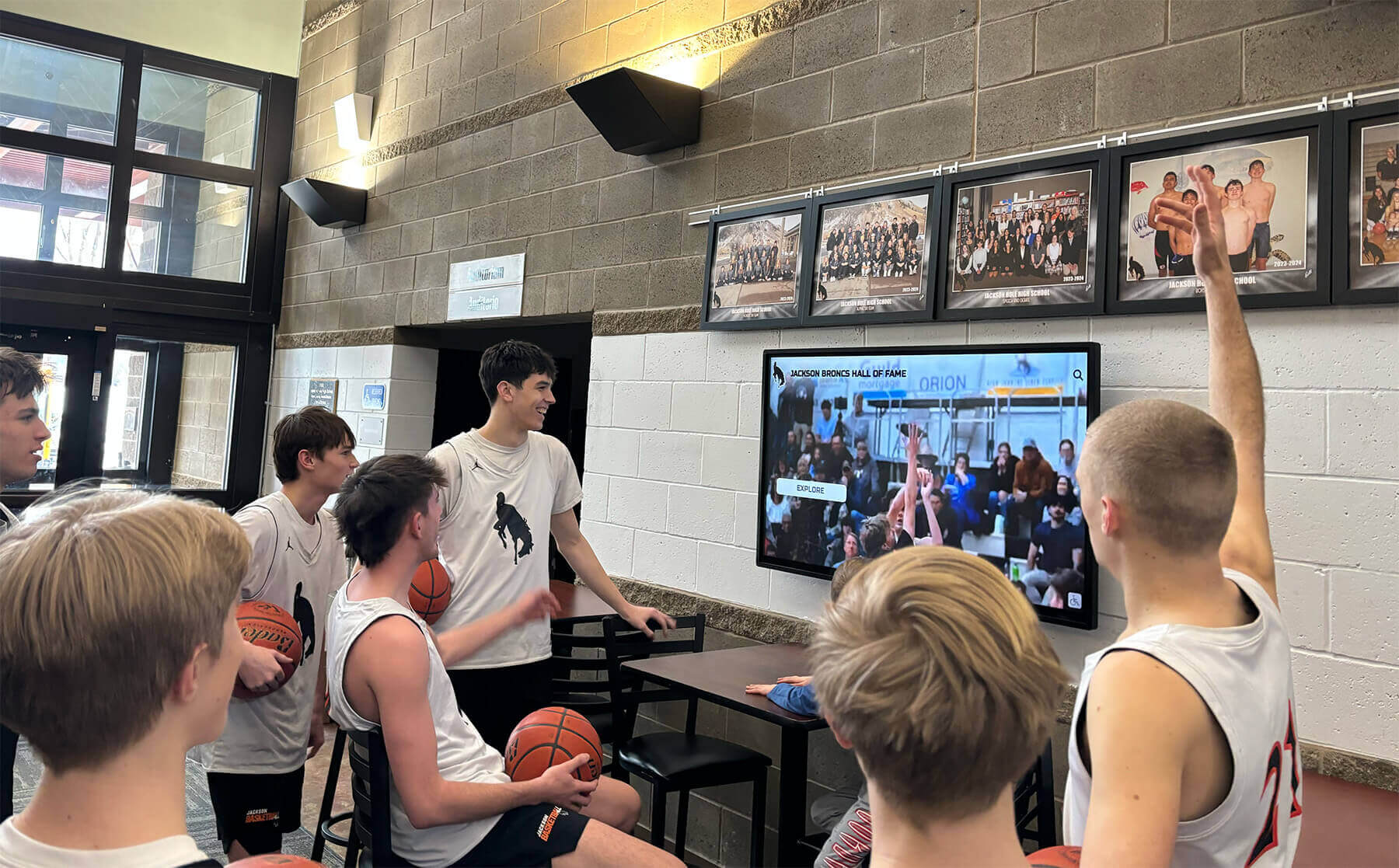
Narrative Context and Storytelling
Beyond factual documentation, effective journey maps incorporate narrative elements that transform statistics into compelling stories.
Season Context: Journey maps become more meaningful when connected to broader season narratives. Documentation of regular season records and conference standings, preseason rankings or predictions, key injuries or roster challenges overcome, mid-season turning points or momentum shifts, and rivalry game results leading into playoffs helps viewers appreciate championship achievements within complete seasonal arcs.
Historical Significance: Contextualizing championships within program history enhances appreciation. Whether journey represents first championship in program history, ends championship droughts spanning decades, extends championship dynasties, sets records for playoff performance, or contributes to multi-sport excellence, this historical framing helps current and future athletes understand the magnitude of achievements.
Personal Stories: Individual athlete and coach narratives humanize championship journeys. Senior leadership culminating careers with titles, coach milestones reached through championships, breakthrough performances by unexpected contributors, adversity overcome by team members, and community support instrumental in success create emotional connections that pure statistics cannot generate.
Schools implementing comprehensive recognition programs find that narrative elements significantly increase engagement time and emotional impact compared to displays focusing exclusively on scores and statistics.
Strategic Implementation of Championship Journey Maps
Successful journey mapping results from systematic planning addressing organizational objectives, available resources, stakeholder engagement, and long-term sustainability requirements.
Phase 1: Planning and Content Strategy (Weeks 1-3)
Begin implementation by understanding current recognition state and defining clear objectives aligned with institutional athletic missions.
Current State Assessment:
- Inventory existing championship recognition methods and locations
- Document which championships receive acknowledgment and identify gaps
- Assess physical space available or need for digital alternatives
- Evaluate stakeholder satisfaction through surveys of athletes, coaches, and communities
- Review recognition patterns for potential improvements
Objective Definition:
- Establish clear goals: inspiring athletes, preserving history, building pride
- Define measurable outcomes: athlete motivation, community engagement, recruitment enhancement
- Identify key stakeholders for planning involvement: coaches, athletic directors, booster clubs
- Determine budget parameters for initial implementation and ongoing operation
- Create timeline for design, content development, and launch
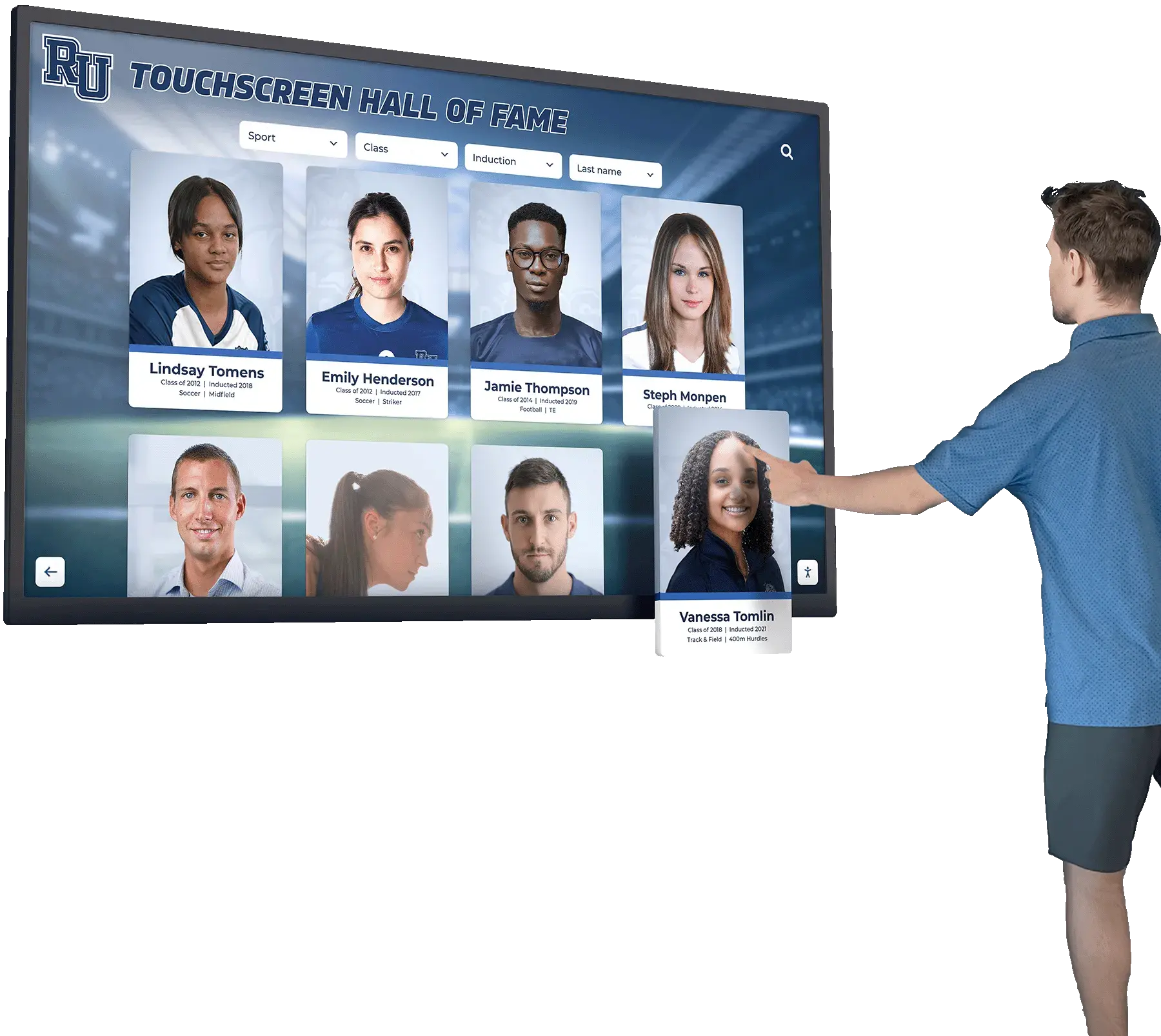
Committee Formation: Assemble diverse planning committee including athletic department representatives ensuring sports have voice in recognition design, championship coaches providing insights into significant moments, booster clubs offering funding support and community perspective, technology coordinators supporting digital implementation if applicable, and administrative leadership confirming institutional support and resource allocation.
Phase 2: Content Development and Documentation (Weeks 4-8)
Create comprehensive championship documentation celebrating complete journeys while maintaining accuracy and narrative quality.
Historical Research: For past championships, systematic research ensures accuracy and completeness. Compile game results from archived programs, scorebooks, and media guides, collect photographs from yearbooks, team archives, and community members, review newspaper coverage documenting games and season narratives, interview coaches and athletes from championship teams, and verify statistics and details through multiple sources ensuring factual accuracy.
This historical development phase typically represents the most time-intensive implementation element but creates the foundation for meaningful recognition properly honoring championship teams.
Content Organization Framework: Determine optimal structure for presenting journey information. Most comprehensive maps organize by sport and season (Fall 2023 Football, Winter 2024 Basketball), within sport by championship year chronologically, for each championship displaying complete playoff bracket or schedule, for each game providing scores, highlights, and contextual information, and incorporating multimedia elements where available enhancing engagement.
Understanding digital sports record keeping helps schools establish systematic approaches to championship documentation that support both immediate recognition and long-term historical preservation.
Quality Standards: Maintain consistent excellence across all championship documentation through professional photography or high-quality scanning of historical images, thorough fact-checking verifying scores, dates, and statistical information, consistent formatting across all entries ensuring professional appearance, appropriate detail level balancing comprehensiveness with readability, and regular audits ensuring information remains accurate and complete.
Phase 3: Technology Selection and Display Implementation (Weeks 9-14)
Evaluate display options and execute professional implementation preparing for successful launch.
Display Technology Evaluation:
Traditional Physical Displays: Championship banners, engraved plaques, trophy cases with accompanying information. These approaches offer timeless aesthetic appeal and no technology requirements but suffer from space limitations, high per-addition costs, lengthy fabrication timelines, and inability to incorporate multimedia or interactive elements.
Digital Interactive Displays: Touchscreen kiosks or wall-mounted displays with cloud-based content management. Digital solutions provide unlimited capacity, instant updates, multimedia integration including video highlights, interactive exploration enabling personalized journeys, and lower long-term costs but require initial technology investment and ongoing technical support.
Hybrid Approaches: Combining traditional championship banners or trophies with digital platforms providing comprehensive journey documentation. Many institutions feature physical trophies for tactile presence while using digital displays to tell complete stories behind championships.
Understanding digital versus traditional recognition advantages helps institutions make informed decisions aligning technology with objectives, budgets, and institutional culture while maximizing recognition impact.
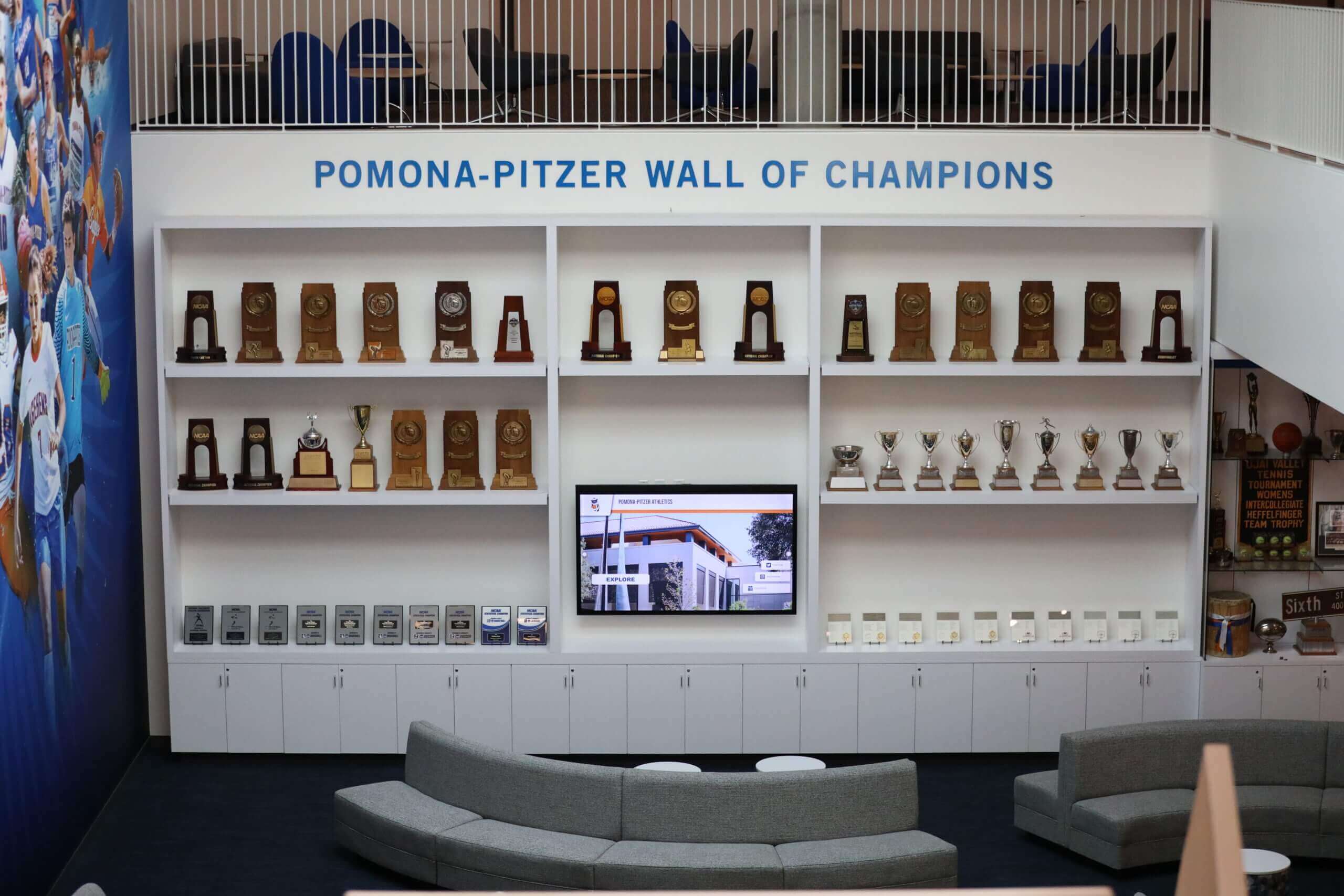
Implementation Execution: For digital displays, secure professional mounting following safety codes and aesthetic standards, ensure complete network connectivity and system configuration, conduct comprehensive testing before public activation, train staff on content management and system administration, and create documentation supporting independent operation and future updates.
Public Launch Strategy: Create excitement through formal unveiling ceremony with team attendance and participation, board members and school leadership engaged in celebration, media coverage extending recognition awareness, promotion through school communications and social media, and demonstration of features encouraging ongoing exploration establishing positive tone for program success.
Phase 4: Ongoing Maintenance and Content Refreshment (Continuous)
Championship journey maps require ongoing attention to maintain relevance, accuracy, and value across years of athletic excellence.
Annual Addition Cycles: Establish predictable rhythms for adding new championship journeys ensuring recognition remains current. Most schools operate on annual cycles adding championships immediately after seasons conclude, updating athlete profiles and statistics during off-seasons, incorporating alumni accomplishments periodically through outreach programs, and refreshing featured content highlighting different championships throughout years.
For digital platforms, updates happen instantly through software without physical modifications. Organizations should maintain engagement through content enhancements adding newly discovered information, featured championship rotations highlighting different sports or eras monthly, multimedia additions as photos or videos become available, and thematic collections around institutional anniversaries or milestone celebrations.
Performance Monitoring: Track meaningful metrics demonstrating program value and informing continuous improvement including total championships documented and displayed, engagement analytics for digital displays showing interaction frequency, athlete feedback on recognition awareness and motivation, coach assessment of cultural impact, and community response through social media engagement and attendance patterns.
Maximizing Impact Through Strategic Journey Mapping
Schools viewing championship journey maps as strategic athletic investments rather than passive acknowledgment achieve significantly stronger outcomes through enhanced motivation, recruitment, and institutional pride.
Athlete Motivation and Championship Culture
Visible, comprehensive championship recognition strengthens commitment to excellence by creating concrete aspirational paths athletes can envision pursuing, communicating that championships result from sustained excellence across multiple performances, providing detailed roadmaps showing what championship pursuit actually entails, validating both star performances and role player contributions throughout journeys, and building championship expectations as athletes internalize possibilities for success.
Athletic programs consistently demonstrate correlations between comprehensive recognition and improved outcomes including higher athlete goal-setting aligned with championship pursuit, increased dedication in practice and preparation, improved performance in high-pressure playoff situations, greater team cohesion and collective identity, and enhanced persistence through adversity during challenging playoff runs.
These outcomes directly support core athletic missions while creating self-reinforcing cycles where recognition leads to motivation leads to championship success leads to additional recognition opportunities.
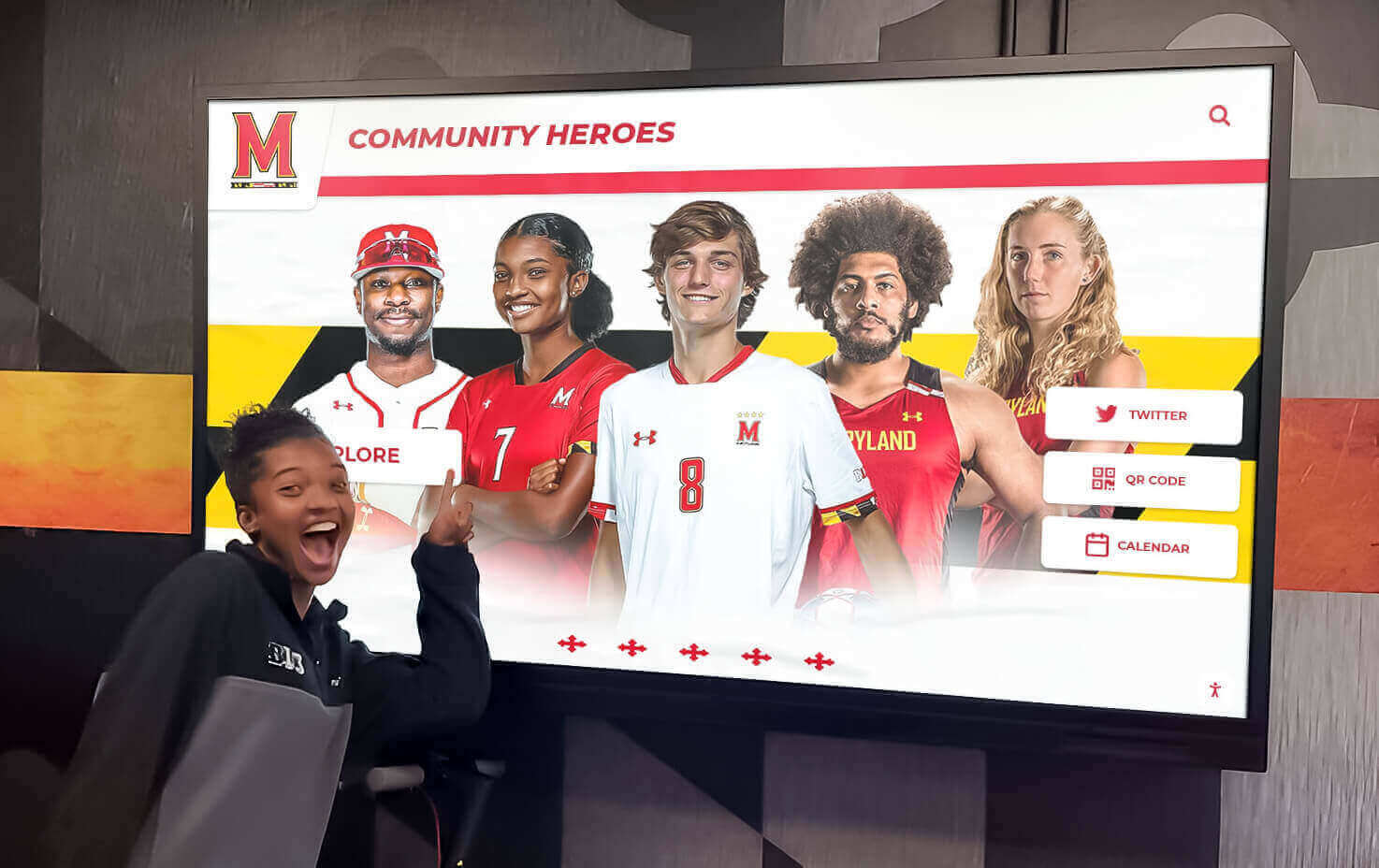
Recruitment and Program Reputation
Championship journey mapping provides powerful tools for attracting top athletic talent and building competitive program reputations.
Demonstrating Winning Culture: Comprehensive championship documentation proves sustained competitive excellence. Journey maps showing multiple championships across different eras demonstrate programs consistently compete for titles rather than experiencing isolated successful seasons. Historical depth signals program stability, quality coaching, and commitment to athletic excellence that recruits seek when choosing schools.
Visualizing Potential Paths: Detailed journey maps help recruits envision their potential futures within programs. When prospective athletes see documented paths showing freshman development into championship contributors, position-specific success stories, academic achievement balanced with athletic excellence, and post-graduation pathways showing career continuation, they develop clearer understanding of development opportunities available.
Facility Quality Signaling: Professional championship recognition demonstrates institutional athletic investment. High-quality journey mapping reflects broader program commitment including coaching support, facility quality, competitive scheduling, and comprehensive athlete development. First impressions during campus visits significantly influence recruitment decisions, and championship displays create immediate positive associations.
Community Engagement and Institutional Pride
Championship journey maps strengthen connections throughout school communities and broader geographic areas.
Shared Celebratory Moments: Championship recognition creates common experiences bonding diverse stakeholder groups. When schools prominently display journey maps, students take pride in their institution’s athletic excellence, families celebrate their children’s contributions to championship success, alumni maintain connections through shared championship memories, community members bond over collective achievements, and local businesses support programs demonstrating excellence.
The visible celebration of championship achievement influences how entire communities perceive institutions and participate in athletic support beyond just attending games.
Educational institutions implementing comprehensive digital recognition systems find that community engagement significantly extends recognition impact beyond brief celebration moments into sustained institutional pride.
Alumni Connection and Giving: Championship journey maps keep graduates connected to alma maters while supporting philanthropic relationships. Alumni return to see their accomplishments properly honored, championship displays prompt nostalgia and positive memories, recognition creates talking points for reunion events and networking, former athletes mentor current players pursuing similar paths, and preserved achievements justify continued institutional engagement and financial support.
Alumni who feel recognized and valued demonstrate higher giving rates, volunteer engagement, and advocacy supporting institutional athletic programs and broader educational missions.
Content and Design Best Practices
How championship journey maps present information significantly impacts recognition effectiveness and stakeholder engagement.
Comprehensive Yet Accessible Information Architecture
Move beyond overwhelming detail to create compelling narratives celebrating complete journeys while maintaining readability and engagement.
Essential Information Hierarchy:
- Championship year and sport prominently displayed
- Complete playoff bracket or schedule overview
- Round-by-round game results with scores and opponents
- Key statistical performers throughout playoff run
- Championship game details and final result
- Season context and historical significance
- Coaching staff and team roster
- Multimedia elements when available
Enhanced Content Options:
- Detailed game recaps for crucial contests
- Player spotlight features on key contributors
- Coach reflections on championship seasons
- Fan perspectives and community reactions
- Season statistics and achievement milestones
- Post-championship athlete pathways and accomplishments
- Anniversary reflections added in subsequent years

Navigation and Accessibility: Organize content enabling easy exploration through sport-based categories (football, basketball, soccer championships), chronological timelines showing championship years, searchable databases finding specific athletes or coaches, filter capabilities by decade, sport, or achievement type, and clear visual hierarchies guiding attention to most important information.
Visual Design and User Experience
Recognition displays should invite exploration rather than overwhelming viewers with information density or complexity.
Clear Organizational Structure: Whether using traditional physical displays or digital platforms, maintain consistent professional presentation quality. Amateur-looking displays inadvertently diminish perceived value of championship recognition. Invest in quality design communicating achievements deserve serious celebration including professional photography and videography, consistent branding reflecting school identity, thoughtful color schemes and typography, intuitive layouts guiding natural exploration, and accessibility considerations ensuring all community members can engage.
For schools implementing digital recognition technology, touchscreen display solutions specifically designed for educational environments ensure professional presentation quality while maintaining ease of use for diverse audiences.
Storytelling Balance: Effective journey maps balance factual documentation with emotional narrative elements. Document objective facts accurately through verified scores, statistics, and dates while incorporating storytelling elements creating emotional connections including personal athlete reflections, coach perspectives on season arcs, dramatic game narratives, community celebration descriptions, and historical context situating achievements.
This balanced approach satisfies those seeking accurate information while engaging viewers who connect more strongly with human stories behind championship successes.
Addressing Common Implementation Challenges
Anticipating obstacles enables proactive problem-solving ensuring program sustainability and community acceptance.
Challenge: Managing Historical Information Gaps
Many schools lack comprehensive documentation for older championships, with incomplete records, missing photographs, or faded institutional memory creating challenges for complete journey mapping.
Solution: Implement phased approach starting with well-documented recent championships while gradually building historical content. Engage alumni through targeted outreach requesting photographs, programs, and memories from championship seasons. Clearly acknowledge where information remains incomplete rather than fabricating details, and celebrate what can be documented while noting historical gaps represent opportunities for future enhancement as information surfaces.
Challenge: Balancing Multiple Sports and Championships
Schools achieving championships across multiple sports face decisions about recognition scope and avoiding appearance of favoritism.
Solution: Implement comprehensive systems celebrating all championships equally regardless of sport profile or championship frequency. When resource constraints require prioritization, use objective criteria like recency (documenting recent championships first) or significance (first championships, drought-ending titles, or exceptional achievement levels). Ensure representation balance so no sports feel systematically excluded while acknowledging practical limitations prevent simultaneous implementation across all programs.
Understanding inclusive recognition approaches helps schools create systems where standards remain consistent while opportunities feel accessible across diverse athletic programs.
Challenge: Maintaining Interest Beyond Championship Seasons
Recognition programs can become overlooked during non-championship years when programs experience typical competitive cycles.
Solution: Refresh content regularly featuring different championships or moments, connect recognition to current season campaigns and goals, create special recognition themes for milestone anniversaries, incorporate athlete “where are they now” updates maintaining relevance, and promote recognition consistently through multiple channels sustaining visibility even during rebuilding seasons. Championship journey maps document possibilities and standards even when current teams aren’t competing for titles, maintaining aspirational value across all competitive cycles.
Future Trends in Championship Journey Mapping
Championship recognition continues evolving with emerging technologies and changing athletic documentation philosophies promising enhanced engagement and effectiveness.
Artificial Intelligence and Automation
Forward-looking recognition systems will incorporate AI enabling automated highlight generation from game footage, natural language queries for conversational championship discovery, predictive analytics identifying teams approaching championship milestones, automated statistical compilation reducing manual documentation burden, and enhanced search capabilities connecting related championships and achievements across time periods.
Real-Time Journey Documentation
Next-generation platforms will seamlessly integrate with scoring systems and statistical databases for automatic game result updates during playoff runs, live playoff bracket updates showing tournament progression, real-time athlete statistics feeding into championship profiles, immediate multimedia addition as photos and videos are captured, and social media integration amplifying recognition during championship pursuits.
Enhanced Accessibility and Reach
Technology enables recognition extending far beyond physical campus displays through mobile applications providing anywhere access to championship histories, virtual reality experiences recreating championship game atmospheres, social media integration amplifying recognition reach, global accessibility for international families and distributed communities, and augmented reality features enhancing physical space displays with digital content layers.
Conclusion: Preserving Championship Legacies for Generations
State championship journey maps represent far more than institutional obligation or retrospective acknowledgment—they embody commitments to celebrating athletic excellence, inspiring championship pursuit, and building communities where achievement is genuinely valued and preserved. When thoughtfully designed with comprehensive documentation, engaging storytelling, and modern technology, these programs transform athletic culture by creating belonging where athletes who contribute to championships feel valued beyond single seasons, communicating standards through visible paths showing what excellence requires, building motivation as comprehensive recognition inspires athletes to pursue similar achievements, strengthening community through shared appreciation of extraordinary accomplishments, and promoting tradition ensuring championships become part of ongoing institutional narratives rather than fading memories.
The most effective championship journey mapping systems balance documentation with storytelling, honor complete playoff paths rather than just final games, maintain accurate and verifiable information, and integrate recognition throughout athletic operations and institutional communications. By implementing the strategies outlined in this guide, schools create sustainable programs authentically celebrating athletes while building positive cultures essential for athletic development and institutional pride.
For athletic programs seeking to enhance recognition capabilities, digital platforms like those offered by Rocket Alumni Solutions provide comprehensive tools for creating engaging, accessible, and expandable championship journey maps. These modern recognition systems ensure programs can scale with growing championship traditions, evolve with technological capabilities, and continue making impact for years to come.
Whether launching new championship recognition or revitalizing existing programs, remember that journey mapping’s power lies not in elaborate displays or expensive technology, but in consistent, authentic documentation that every step toward championship success matters and deserves celebration. Start where you are, implement thoughtfully, and continuously refine based on feedback and outcomes. The investment in properly recognizing championship journeys yields immeasurable returns in motivation, culture, and community that define athletic distinction across generations.
